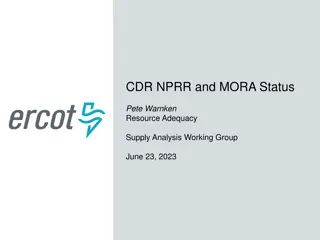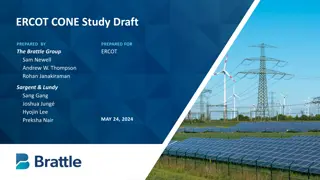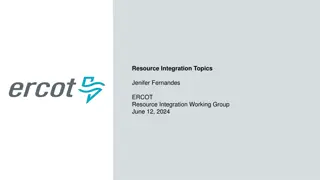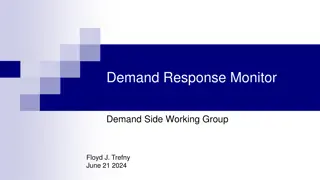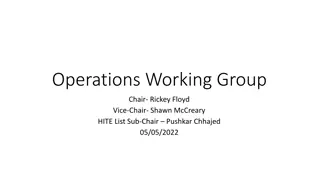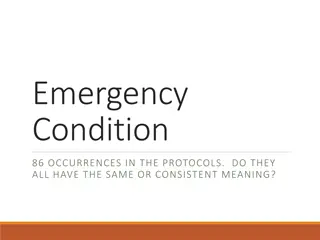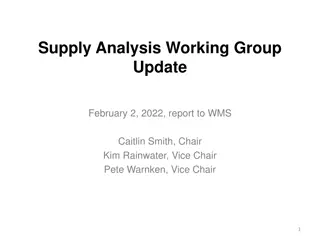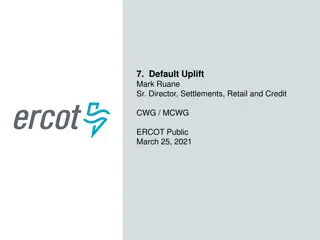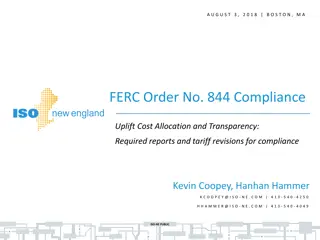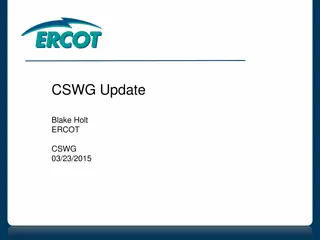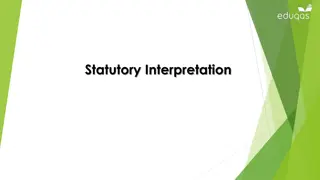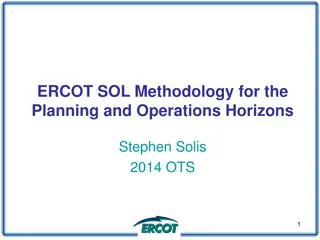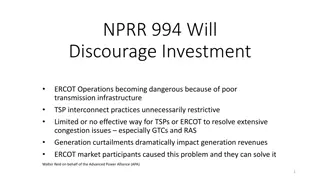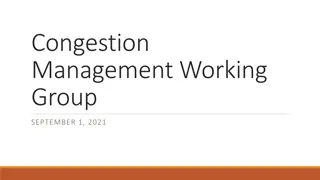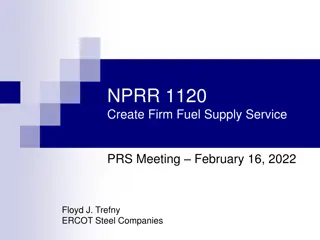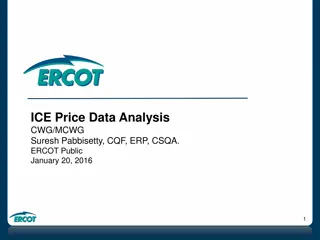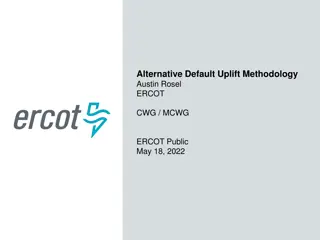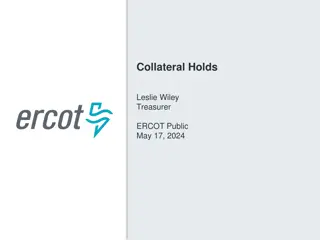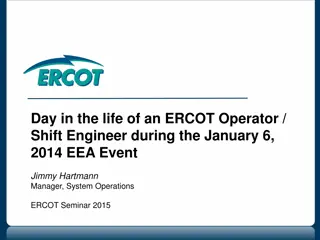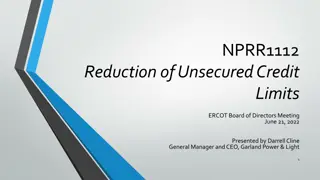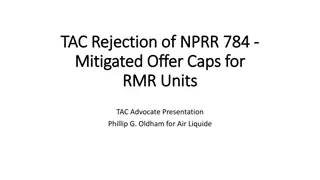Understanding Potential Uplift Interpretation in ERCOT Protocols
ERCOT's Potential Uplift Interpretation Protocol defines Potential Uplift as the potential uplift to the Counter-Party based on short payments. The protocol outlines calculations and clarifies language ambiguity to ensure accurate interpretation. ERCOT seeks market feedback for further clarification through a potential NPRR.
Download Presentation

Please find below an Image/Link to download the presentation.
The content on the website is provided AS IS for your information and personal use only. It may not be sold, licensed, or shared on other websites without obtaining consent from the author. Download presentation by click this link. If you encounter any issues during the download, it is possible that the publisher has removed the file from their server.
E N D
Presentation Transcript
4. Potential Uplift Interpretation Mark Ruane Sr. Director, Settlements, Retail and Credit CWG / MCWG ERCOT Public May 19, 2021
Potential Uplift Interpretation Protocol Section 16.11.4.1 defines Potential Uplift (PUL) as: Potential uplift to the Counter-Party, to the extent and in the proportion that the Counter-Party represents Entities to which an uplift of a short payment will be made pursuant to Section 9.19, Partial Payments by Invoice Recipients. It is calculated as the sum of: (a) Amounts expected to be uplifted within one year of the date of the calculation; and (b) 25%, or such other percentage based on available statistics regarding payment default under bankruptcy reorganization plans, of any short payment amounts being repaid to ERCOT under a bankruptcy reorganization plan that are due more than one year from the date of the calculation. 2 ERCOT Public
Potential Uplift Interpretation Because of the ambiguity in paragraph (b), ERCOT Legal looked at the derivation of the language to clarify the original intent. PUL language was initially introduced in PRR 522, Collateral Requirements and Credit Changes, in 2004. As adopted, and throughout the zonal Protocols, the language was: The sum of: (1) Amounts expected to be uplifted within one year of the date of the calculation; and (2) Twenty-five percent (25%) [or such other percentage based on available statistics regarding default of reorganized Entities of any short payment amounts being repaid under a payment plan ordered by a bankruptcy court for a defaulting QSE] of amounts due more than one year from the date of the calculation 3 ERCOT Public
Potential Uplift Interpretation (2) Twenty-five percent (25%) [or such other percentage based on available statistics regarding default of reorganized Entities of any short payment amounts being repaid under a payment plan ordered by a bankruptcy court for a defaulting QSE] of amounts due more than one year from the date of the calculation. The bracketed clause is best interpreted as parenthetical, providing an exception for bankrupt entities to the general requirement of adding 25% of amounts to be uplifted after one year to the 100% of amounts to be uplifted within one year. Therefore the original intent was that PUL equal a. 100% of amounts to be uplifted within one year, plus b. 25% of amounts to be uplifted after one year, plus c. 25% or another appropriate percentage of amounts expected to be repaid under a bankruptcy plan. 4 ERCOT Public
Potential Uplift Interpretation The changes in punctuation that change the meaning of the clause appear to have occurred when the language was incorporated in nodal Protocols (there is no supporting NPRR). Given the conflict between the plain reading of the existing language, and what appears to be the original intent, ERCOT believes a clarifying NPRR is necessary, and seeks market feedback. 5 ERCOT Public
Default Uplift Discussion 6 ERCOT Public



